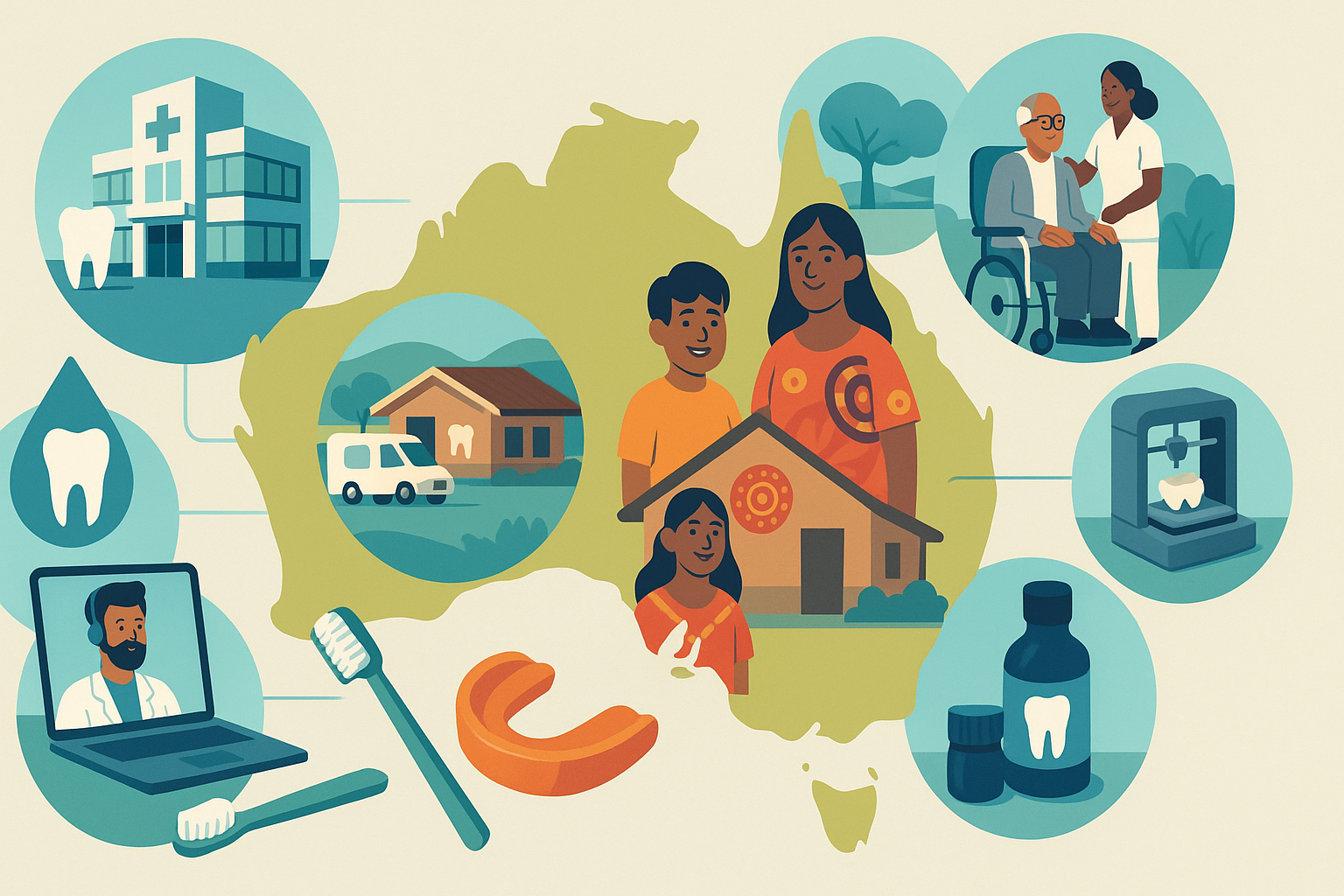Australia’s dental landscape sits at the intersection of public health ideals and market realities. For children and teens, the Child Dental Benefits Schedule (CDBS) helps eligible families cover basic services such as examinations, X‑rays, fillings, and root canals across participating public or private clinics. For adults, funding is more fragmented: state and territory public dental services primarily serve concession‑card holders and priority groups, often through community clinics, while the majority of working‑age adults rely on private practices paid out of pocket or via private health insurance with “extras.”
Cost is the most cited barrier. Without universal adult coverage, fees vary widely and can deter preventive visits. Public waiting lists can stretch months for non‑urgent care, pushing minor issues toward more complex—and expensive—treatments. Mobile dental vans and outreach programs attempt to fill gaps, particularly in regional and remote communities, but coverage can be sporadic.
Preventive strategies have made measurable headway. Water fluoridation across most of Australia contributes to lower rates of tooth decay; school‑based sealant programs target high‑risk children; and national guidelines encourage twice‑daily brushing with fluoride toothpaste. Campaigns also highlight the links between oral health and systemic conditions like diabetes and cardiovascular disease, underscoring why prevention matters.
Indigenous Australians face disproportionate burdens: higher rates of untreated decay, limited service availability, and cultural barriers that discourage attendance. Culturally safe care—delivered through Aboriginal Community Controlled Health Organisations or practices trained in inclusive models—improves trust and uptake. Interpreter services, flexible booking, and family‑centred appointments can further reduce attrition.
Technology is reshaping access. Teledentistry triage, particularly in rural settings, allows dentists to review photos or video, provide interim advice, and prioritise in‑person visits. Digital records and e‑referrals help coordinate care across clinics and specialties. Meanwhile, minimally invasive techniques—like silver diamine fluoride for arresting early decay—offer lower‑cost interventions that can be delivered in community settings.
Insurance structure matters. Extras policies commonly include annual limits for check‑ups, scale and cleans, and basic fillings, but caps and waiting periods can undermine value. Consumers benefit from comparing policies, checking preferred provider networks (which may reduce out‑of‑pocket costs), and scheduling care to maximise yearly limits.
For policymakers, evidence points toward a blend of solutions: expand eligibility for public adult care (or fund specific services, such as dentures and urgent treatment), invest in regional workforces through rural placements and incentives, and embed oral health into primary care screenings. For households, the most powerful actions remain daily: brush, floss, limit free sugars, avoid tobacco and vaping, and visit a dentist regularly—even when nothing hurts.
Australia’s framework isn’t perfect, but it is evolving. By aligning prevention, targeted public funding, and smarter delivery models, the system can bend toward equity while preserving the clinical excellence for which Australian dentistry is known.









